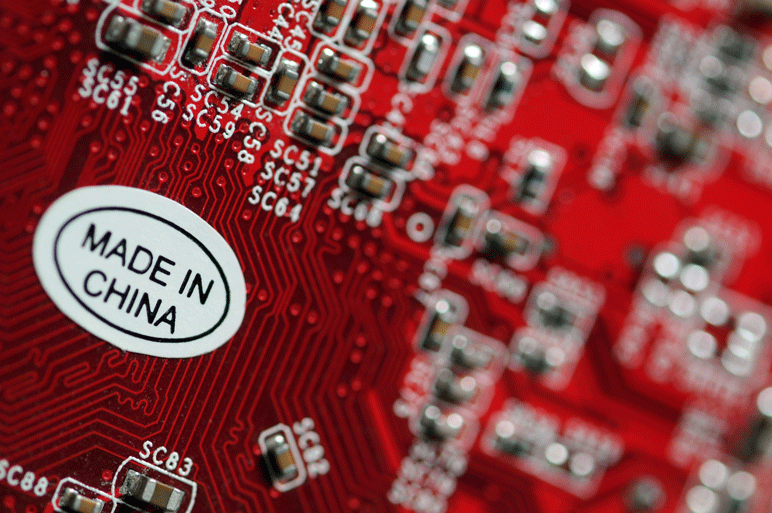 In recent years, the Chinese Government has taken a number of steps that have sent a strong signal to the market that there will be a breakthrough in the transformation of China’s industries. Zhu Qian of Desoutter Industrial Tools details the progress that has been made so far, noting that China’s route to the next Industrial Revolution will involve playing a great deal of catch-up.
In recent years, the Chinese Government has taken a number of steps that have sent a strong signal to the market that there will be a breakthrough in the transformation of China’s industries. Zhu Qian of Desoutter Industrial Tools details the progress that has been made so far, noting that China’s route to the next Industrial Revolution will involve playing a great deal of catch-up.
The Ministry of Industry and Information Technology has stated that China’s industrial transformation will take place in three stages and will see it evolve into a global manufacturing power over the next three decades. China Manufacturing 2025 is the first ten-year plan towards achieving this strategic goal and lays out the developmental framework and top-down guidance for the next ten years which will move China into the ‘second phalanx’ of global manufacturing.
Three major reasons for proposing China Manufacturing 2025
First, the costs of labour and raw materials are increasing in China due to environmental concerns and resource limitations. To reduce costs, some home-grown manufacturing enterprises are now moving out of China, with a number of multinational companies turning to Southeast Asia and its cheaper labour market: China’s position as the ‘world’s factory’ is now being seriously challenged. At the same time, serious pollution issues and high energy consumption of the traditional manufacturing industry is now increasingly being questioned by the public.
Second, Germany’s Industry 4.0 initiative and the reindustrialisation approach in the United States have inspired China to strengthen its resolve to upgrade its status from a manufacturing country to a manufacturing power.
Third, with a new generation of information technology becoming deeply integrated into modern manufacturing, we are seeing continuous innovation in manufacturing technology, which is pushing China to discover a new development path.
China Manufacturing 2025 is not the same as Industry 4.0
Some people have called China Manufacturing 2025 the Chinese version of Industry 4.0, as they both share the same ultimate goal and key methods for achieving it. However, it should be noted that the two strategies are not equivalent. China and Germany differ greatly in many ways, such as the overall state of each respective nation and their current level of manufacturing technology.
Germany is a long-time manufacturing powerhouse. While China is the world’s largest manufacturing nation it currently lacks manufacturing strength. There is a paucity of innovation and guarantees in terms of base materials, basic technology and industry technology, and China still occupies the low-end of the global value chain. On the whole, Germany is in a period of transition from Industry 3.0 to 4.0. The development of China’s manufacturing industry, however, has been sporadic; some parts are already at 3.0, while some are still stuck at level 2.0. Therefore, China Manufacturing 2025 entails careful planning for Industry 4.0 and securing a space at the head of the technological table, while at the same time making up for an under-developed manufacturing base and compensating for a number of historical setbacks. In particular, there is a need to replace outdated production facilities and reduce excess capacity, which will help spur industrial development and could allow China to leapfrog other economies.
China Manufacturing 2025 and Internet Plus
In March 2015, during the ‘two sessions’ (lianghui) legislative meetings in China, Premier Li Keqiang, introduced the concept of Internet Plus in his government work report, which will open up a new way of thinking for the manufacturing sector.
Through the Internet Plus strategy, China will integrate manufacturing and Internet technology to promote the development of the Internet, big data and cloud computing. Internet-based manufacturing has the ability to respond quickly to market changes. Through restructuring and dynamic coordination, a manufacturer can allocate resources, improve the quality of products, reduce the time required for products to come to market and increase market share. At the same time, it also can share the expense of developing the right infrastructure as well as investment in equipment, which reduces operating risks.
The Internet gives rise to intelligent factories
The advent of the Internet era has shaken traditional manufacturing to its core and created information asymmetry between production departments and business departments. In the traditional industrial era, manufacturers had no low cost method to understand the individual demands of each customer, so they often adopted a one-size-fits-all approach, bringing the functions most in demand together in one product. The Internet has changed this, breaking down barriers between the manufacturing execution system (MES) and the enterprise resource planning system (ERPS). A new production system can bring changes, for instance, in customised manufacturing. This process, called Industry 4.0 in Germany and the Industrial Internet in the United States, is the same approach as the Internet Plus-led China Manufacturing 2025 initiative.
Intelligent assembly in intelligent factories
Intelligent assembly plays a particularly prominent role in the intelligent factory and contributes to its development on five levels:
- Intelligent production: In intelligent production, production equipment and raw materials are linked together. Through radio frequency identification (RFID) technology and visual control technology, among others, it is possible to customise production and build intelligent workshops.
- Intelligent products: Assembly tool manufacturers provide intelligent products which can be used to control manufacturing. Assembly data can be uploaded to the cloud, making it more convenient for users to manage.
- Production services: More and more companies are providing solutions instead of just products, transforming from manufacturers into service providers. Creating value through services, so as to generate profit, is giving rise to new business models. Information collected from intelligent products is resulting in human-orientated services.
- Cloud-based factories: Cloud-based factory management systems will be built. Through this system it will be possible to know which production line has completed assembly, which is at full capacity and which is idle. The idle tools can then be utilised to create more value, making full use of all resources. Producers do not even need to buy the assembly equipment; they only need to rent the equipment in the cloud, saving them from getting caught up looking for original equipment manufacturers or building a factory themselves. This will result in a wave of entrepreneurship and innovation.
- Crossover impact: Automation and information are deeply entwined. For example, as service providers to intelligent factories, assembly tools vendors can bring together all assembly information for that industrial sector, including the upstream plants, downstream factories and the parallel line producers, which can be used as a method of communication, providing crossover advisory and support. Crossover will become the norm, and business models will need to be redefined.
Founded in 1914 and headquartered in France, Desoutter Industrial Tools is a global leader in electric and pneumatic assembly tools serving a wide range of assembly and manufacturing industries, including light and heavy vehicles, aerospace, automation, general industry, among other sectors. Desoutter designs, develops and delivers innovative and high-quality industrial tool solutions, including electric and pneumatic screwdrivers, a sophisticated screwfeeder system, advanced drill units and torque measurement systems. Find more information: www.desouttertools.com.cn.


Recent Comments